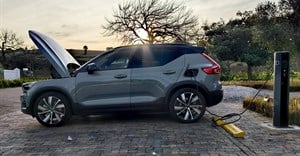
Subscribe & Follow
Jobs
- Commercial Vehicle Sales Manager Pretoria
- VAPS Sales Consultant - Automotive Pretoria East
Driving into the future: Optimal development of South Africa’s motor industry

The National Association of Automobile Manufacturers of South Africa (NAAMSA) indicated that this decline can be attributed to various factors, including national election jitters, additional public holidays, and overall economic uncertainty. This has led to subdued activity in motor vehicle purchases.
This uncertainty, coupled with economic concerns, deterred consumers and businesses from investing in big-ticket items like vehicles. The light-commercial vehicle segment also suffered, experiencing a 19.5% year-on-year decline.
Over the past decade, South Africa's economy has faced slow growth, high unemployment, and rising public debt, exacerbated by structural challenges like energy shortages and political instability.
The Covid-19 pandemic further constrained the economy, but recovery efforts are ongoing amid persistent inequality and the need for comprehensive reforms. Similarly, exports witnessed a substantial decrease of 19.1% compared to May 2023, reflecting broader economic challenges.
The high lending rate, high inflation, and relatively lower household income negatively affected the affordability of new passenger vehicles for many potential buyers. Economic conditions placed financial strain on consumers and played a significant role in dampening demand. Overall, these factors created a challenging environment for the automotive industry, resulting in a notable year-on-year decline in passenger vehicle sales.
Strategic decisions needed to develop motor dealerships within SA’s uncertain economy
Considering this economic climate, motor manufacturers and their dealer groups will be considering their options whether to stay where they are, relocate some of their dealer outlets or reduce their numbers.
Others seeing opportunity in the market might even be considering an expansion strategies of their dealer network. Whatever the decision, this must be driven by data and strategic insights. This should include a comprehensive 'greenfields' analysis, leveraging consumer, transport, and population data, to map out the full market potential for dealership locations across the nine province.
This Greenfield approach aims to define the optimum number and location of dealerships considering the full market potential.
This enables a motor manufacturer to consider their existing number of dealers and compare it to the results of the Greenfield analysis. Motor manufacturers can then decide on whether to expand, relocate or rationalise their dealer networks considering the economic environment.
Having determined their situation, a ‘brownfields’ analysis can be done that takes into consideration the size and distribution of the potential market, location of existing brand and competitor dealerships and the availability of preferred sites.
Preferred sites are normally where there is a hub of economic activity such as in motor dealer clusters, near shopping malls or at major transport intersections. This enables a motor manufacturers to pinpoint the best spots for new dealerships.
It further enables an in-depth analysis to determine the ideal number and locations of motor dealerships across South Africa's nine provinces. This approach requires access to data on the market potential, consumer preferences for brands, location of dealers of the different motor manufacturers, where preferred sites are situated and accessibility modelling tools.
These proven approaches have been used to develop network strategies for passenger, light commercial, heavy commercial, agricultural, second hand and car rental dealerships. This includes brands such as BMW, Fiat, Mazda, Mercedes-Benz, Nissan, Suzuki, Volvo, CNH, Daimler Trucks, Auto Pedigree and Europcar.
Gauteng: A hub of opportunity
The bustling province of Gauteng, with its vibrant metro and non-metro areas, presents the most substantial opportunities for motor manufacturers. Using the available data and accessibility modelling tools, it is possible to identify the location of dealerships of different sizes. These dealerships of varied sizes require different capacities and travel times for them to be profitable.
The province can be broken up into five high potential regions, namely northern (Pretoria): Midrand and Reef, Johannesburg, East Rand/Ekurhuleni and Vaal Triangle (Vanderbijlpark and Vereeniging). Depending on the availability of existing dealerships and the size of the target market, potential for different sized dealerships in this robust market can be identified.
However, there are circumstances where a particular region is already optimally serviced providing potential for only smaller dealerships to fill gaps in the market.
Western Cape: Expanding horizons
Cape Town and its surroundings areas offer a promising landscape for motor manufacturers’ growth, especially as the ‘semigration’ continues post elections and expats return to the country.
The current dealerships in the metro area often fall short of the market potential allowing for new dealerships of different sizes to be developed. In some instances, like in central Cape Town where large dealerships are already located, there is still significant remaining capacity to expand near existing dealerships.
Areas that are growing such as the West Coast and Northern Surburbs of Cape Town provide potential for dealerships of different sizes to be located there. In contrast, suburbs in the southern Cape Peninsula around Muizenberg, Fish Hoek, Hout Bay and Strand/Somerset West are ripe for dealerships of a smaller size because of the constrained development environment brought about by the coastline and mountains. In the rest of the Western Cape Province, there is limited capacity for dealerships except in the larger urban centres such as George.
KwaZulu-Natal: A strategic province
In KwaZulu-Natal, motor manufacturers currently operate a number of dealerships, with opportunities existing for further expansion in Durban and surrounding areas. Potential exists for large dealerships to fill high potential developing markets and smaller versions to fill in the gaps. The hilly terrain, coastline, and constrained accessibility of the transport network as well as a smaller market, limit the potential in KwaZulu-Natal.
Areas such as Pietermaritzburg have sufficient dealerships that align with the local market and prevent further dealership development. In other parts of the province opportunity exists for smaller dealerships but economic factors, limited accessibility and the dispersed target market influence expansion.
Eastern Cape: Targeted growth potential
The Eastern Cape's unique demographic and geographic challenges require a much more targeted approach. The situation is that the existing dealerships, result in the analysis recommending limited opportunity for expansion of larger dealerships but the potential remains for small forms in places like Gqerberha, East London, Mthatha and some of the larger towns in the province.
Despite expectations, East London does not meet the threshold for larger dealerships because of the dispersed population in combination with significant income variations.
Rural Provinces – Potential limited to urban centres
If one considers the more rural provinces of the Free State, Northern Cape, North West, Limpopo and Mpumalanga potential exists mainly for smaller dealership in urban centres like Mangaung, Welkom, Kimberly, Upington, Mmabatho, Klerksdorp, Potchefstroom, Polokwane, Emalahleni, and Nelspruit. Although the accessibility modelling shows that there is room for growth, it is largely for the smaller form of the dealership.
Data-driven strategies optimize motor dealer networks for growth
Motor manufacturers’ strategies to expand, relocate or rationalise their dealership networks across South Africa must align by using a data-driven approach.
This approach must harness data on the market potential and existing dealer networks in the motor industry and leverage sophisticated accessibility modelling tools to understand local dynamics and potential for dealerships.
Using these methods, motor manufacturers can optimize their dealer marketing areas, while ensuring accessibility and convenience for their clientele.
These approaches can anticipate future growth opportunities and can underscore motor manufacturers’ commitment to developing the South African motor industry.

- Understanding citizen’s service delivery concerns, voter outcomes and consumer behaviour15 Jul 14:26
- Driving into the future: Optimal development of South Africa’s motor industry06 Jun 15:06
- Improving market access with consumer insights to sustain and grow South Africa’s automotive industry06 Mar 12:54
- Approaches to retail network optimisation in South Africa04 Apr 12:08
- Webinar: Using robust spatial data to benefit from the sizable township economy in South Africa21 Nov 09:15















